Production Supervisor
60+ Production Supervisor Interview Questions and Answers for Freshers
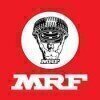
Asked in MRF Tyres

Q. What are the responsibilities of a production supervisor?
A production supervisor is responsible for overseeing the manufacturing process and ensuring that production targets are met.
Supervising and coordinating the activities of production workers
Setting production goals and targets
Monitoring production processes to ensure efficiency and quality
Training and developing production staff
Maintaining production records and reports
Implementing safety and quality control measures
Identifying and resolving production issues
Collaborating wit...read more

Asked in CMR Green Technologies

Q. How can fuel consumption, manpower, charging time, and rejection rates be reduced and controlled?
Fuel consumption, manpower, charging time, and rejection can be controlled through proper planning and implementation of efficient processes.
Implementing a fuel-efficient driving policy and regular maintenance of vehicles can reduce fuel consumption.
Proper scheduling and allocation of manpower can optimize productivity and reduce unnecessary labor costs.
Investing in fast charging technology and optimizing charging schedules can reduce charging time.
Implementing quality contro...read more

Asked in MRF Tyres

Q. Situation handling technique
Situation handling technique
Identify the situation and understand its impact
Analyze the possible solutions and their consequences
Make a decision based on the best course of action
Implement the chosen solution
Evaluate the outcome and make adjustments if necessary
Asked in Mahakoshal Refractories

Q. (1)What do you mean by torque? (2)Some sort of gear and pulley based numericals? (3)What do you mean by BS-4 ?
Torque is a measure of the twisting force applied to an object.
Torque is the rotational equivalent of force.
It is the product of force and the perpendicular distance from the axis of rotation.
Torque is measured in units of force multiplied by distance, such as Newton-meters (Nm).
It determines the ability of an object to rotate or change its rotational motion.
Torque is important in various applications, including machinery, vehicles, and engineering.
For example, in a car engin...read more

Asked in Mohini Organics

Q. In case the reactor gets pressurized and the PRV is not working properly, how would you handle this situation?
In case of reactor overpressure and PRV failure, immediate action is crucial to ensure safety and prevent accidents.
1. Assess the situation: Quickly evaluate the pressure levels and determine the extent of the overpressure.
2. Activate emergency protocols: Implement emergency shutdown procedures to isolate the reactor from other systems.
3. Use manual relief valves: If available, manually open any secondary relief valves to reduce pressure.
4. Cool the reactor: Introduce cooling...read more
Asked in Chetak Coatings

Q. Are you applying for this job just to pass time, or are you looking for a long-term position with the company?
I am committed to contributing positively to the company and growing within the role, not just passing time.
I have a strong passion for production management and improving processes, as seen in my previous role where I increased efficiency by 20%.
I believe in aligning my goals with the company's vision, demonstrated by my initiative to lead a team project that reduced waste.
I am eager to develop my skills and take on new challenges, such as pursuing certifications relevant to...read more
Production Supervisor Jobs

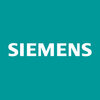

Asked in Chetak Coatings

Q. How can the company be assured that you will be beneficial?
I can assure the company of my benefit by utilizing my skills and experience to improve production efficiency and quality.
I have a proven track record of successfully managing production teams and meeting production targets.
I am knowledgeable in industry best practices and can implement them to improve production processes.
I am a quick learner and can adapt to new technologies and processes to improve production efficiency.
I am a team player and can work collaboratively with ...read more

Asked in Escorts Kubota Limited

Q. How can you contribute to quality management?
I can contribute in quality management by implementing quality control measures, conducting regular audits, and ensuring compliance with industry standards.
Implementing quality control measures to ensure that products meet or exceed customer expectations
Conducting regular audits to identify areas for improvement and ensure compliance with industry standards
Developing and implementing training programs to educate employees on quality management principles
Collaborating with cro...read more
Share interview questions and help millions of jobseekers 🌟


Asked in Banswara Syntex

Q. How long does it take to doff 30 count material at a speed of 7700 rpm with a weight of 2.5kg?
This question involves calculating the doffing weight of a 30 count material TFO at a specific RPM compared to a known weight.
Understanding TFO: TFO stands for 'Twist Free Operation', which is a method used in yarn production to reduce twist in the yarn.
Count and Weight: The '30 count' refers to the yarn's thickness, and knowing the weight of the yarn helps in calculating the doffing weight.
RPM Impact: The speed of 7700 RPM affects the production rate and efficiency, which ca...read more
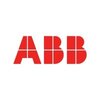
Asked in ABB

Q. What is poka yoka Production efficiency Production process equations Economic production functions M
Poka-yoke enhances production efficiency by preventing errors in processes, leading to improved quality and reduced waste.
Poka-yoke devices are simple tools designed to prevent mistakes, such as jigs that ensure parts are assembled correctly.
Production efficiency can be measured using metrics like Overall Equipment Effectiveness (OEE), which considers availability, performance, and quality.
Production process equations often involve variables like input, output, and waste, hel...read more

Asked in Mahindra & Mahindra

Q. What is the difference between a normal break and an oil break?
Normal break is a scheduled break during work hours while oil break is a break taken to change or check oil levels in machinery.
Normal break is a regular break given to employees during work hours to rest and recharge.
Oil break is a break taken to change or check oil levels in machinery to ensure smooth functioning.
Normal break is usually scheduled and predetermined while oil break is taken as and when required.
Normal break is usually shorter in duration compared to oil break...read more

Asked in MRF Tyres

Q. Way of Communicating with others
Effective communication is essential for a Production Supervisor to ensure smooth operations and teamwork.
Active listening to understand and address concerns
Clear and concise verbal communication
Written communication for documentation and instructions
Non-verbal communication to convey messages
Adapting communication style to different individuals and situations
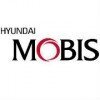
Asked in Hyundai Mobis

Q. What is SAP MM and its role in purchasing?
SAP MM is a module in SAP ERP that manages materials management and purchasing processes.
SAP MM stands for Systems, Applications, and Products in Materials Management
It is a module in SAP ERP that focuses on managing materials, inventory, and procurement
SAP MM handles various functions like material planning, purchasing, inventory management, and invoice verification
It helps streamline the procurement process, track inventory levels, and ensure timely delivery of materials
Pur...read more
Asked in Catasynth Speciality Chemicals

Q. Explain your current organization and its products.
Our current working organization is a manufacturing company that produces a variety of consumer goods.
We have a diverse product line including household items, personal care products, and electronics.
Our organization operates multiple production lines to meet the demand for our products.
We focus on quality control and efficiency in our production processes to ensure customer satisfaction.
Our team of production supervisors oversee the day-to-day operations and ensure productio...read more

Asked in ABB

Q. What to doing fifo mentain,creatical condition how to do manufacturing,
FIFO (First In, First Out) is a method to manage inventory and production, ensuring older stock is used before newer stock.
Inventory Management: Implement FIFO by organizing products so that the oldest items are at the front, ensuring they are used first. For example, in a warehouse, place older stock in accessible locations.
Production Scheduling: Schedule production runs based on FIFO principles to minimize waste. For instance, if raw materials have expiration dates, priorit...read more

Asked in Mahindra Automotives

Q. Supply/ delivery of semi- finish powertrain to main lion
Ensuring timely supply and delivery of semi-finished powertrain components to the main production line.
Coordinate with suppliers to ensure timely delivery of semi-finished powertrain components.
Implement inventory management systems to track supply levels and prevent shortages.
Work closely with logistics team to optimize delivery schedules and minimize delays.
Regularly communicate with production line managers to understand demand and adjust supply accordingly.

Asked in CMR Green Technologies

Q. How do you control fuel consumption?
Fuel consumption control can be achieved through proper planning, monitoring, and maintenance.
Develop a fuel consumption plan based on historical data and projected usage
Monitor fuel usage regularly and identify any deviations from the plan
Implement maintenance programs to ensure vehicles and equipment are operating efficiently
Train drivers and operators on fuel-efficient driving techniques
Consider alternative fuel sources or technologies
Use technology such as GPS tracking an...read more

Asked in Lupin

Q. In RMG, how do we calculate capacity?
Capacity in RMG is calculated based on machine speed, working hours, and efficiency.
Capacity = Machine speed x Working hours x Efficiency
Machine speed is the maximum speed at which the machine can operate
Working hours are the number of hours the machine is available for production
Efficiency is the percentage of time the machine is actually producing output
For example, if a machine has a speed of 100 units per hour, is available for 8 hours a day, and has an efficiency of 80%,...read more
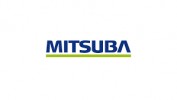
Asked in Mitsuba Sical

Q. What is incremental production?
Increment production refers to the increase in the amount of goods produced over a certain period of time.
Increment production can be achieved through various methods such as improving efficiency, increasing workforce, or upgrading equipment.
It is important for production supervisors to monitor and track increment production to ensure that production goals are met.
Increment production can also lead to cost savings and increased profitability for the company.
For example, a pro...read more

Asked in CMR Green Technologies

Q. How do you control excess manpower?
To control manpower excess, proper planning, forecasting, and monitoring are necessary.
Analyze production data to determine the required workforce
Implement flexible work arrangements like part-time or temporary employment
Cross-train employees to perform multiple tasks
Monitor employee attendance and productivity
Implement a hiring freeze or reduce overtime
Consider outsourcing or automation as alternatives
Communicate with employees and involve them in the decision-making process
Asked in Western Chemical Industries

Q. What are endothermic and exothermic reactions?
Endothermic reactions absorb heat from the surroundings, while exothermic reactions release heat.
Endothermic reactions require energy input to occur
Exothermic reactions release energy in the form of heat
Examples of endothermic reactions include photosynthesis and melting ice
Examples of exothermic reactions include combustion and neutralization reactions

Asked in HBL Power Systems

Q. Which electrolyte is used in a lead acid battery?
The electrolyte used in lead acid battery is sulfuric acid.
Lead acid batteries use sulfuric acid as the electrolyte.
The sulfuric acid reacts with the lead plates to produce electricity.
The concentration of sulfuric acid in the battery determines its voltage.
The electrolyte level in the battery needs to be checked and topped up regularly.
Adding distilled water to the battery can help maintain the electrolyte level.

Asked in MRF Tyres

Q. What is meant by 5S?
5S is a methodology used to organize and maintain a clean and efficient workplace.
5S stands for Sort, Set in Order, Shine, Standardize, and Sustain.
It is commonly used in manufacturing and production environments.
Sort involves removing unnecessary items from the workplace.
Set in Order involves organizing the remaining items in a logical and efficient manner.
Shine involves cleaning and maintaining the workplace.
Standardize involves creating and implementing procedures to ensur...read more

Asked in Banswara Syntex

Q. What is the difference between Quantum 3 and Quantum 4?
Quantum 3 and Quantum 4 refer to different levels of quantum mechanics applications in production processes.
Quantum 3 typically involves basic quantum principles applied to production.
Quantum 4 incorporates advanced quantum technologies, such as quantum computing.
Example of Quantum 3: Using quantum principles to optimize supply chain logistics.
Example of Quantum 4: Implementing quantum algorithms for real-time data analysis in production.

Asked in Suzuki Motorcycle

Q. How can rejection rates be reduced?
To reduce rejection, focus on improving quality control measures and training employees.
Implement a thorough quality control process to catch defects early on
Train employees on proper production techniques and quality standards
Regularly review and analyze rejection data to identify patterns and areas for improvement
Collaborate with suppliers to ensure they are meeting quality standards
Invest in new technology or equipment to improve production efficiency and reduce errors

Asked in MRF Tyres

Q. Which types of rubber?
There are several types of rubber used in production, including natural rubber, synthetic rubber, and specialty rubbers.
Natural rubber is derived from latex and is commonly used in tires, rubber bands, and gloves.
Synthetic rubber is made from petroleum-based chemicals and is used in a wide range of products, such as hoses, seals, and gaskets.
Specialty rubbers include neoprene, silicone, and butyl rubber, which have unique properties for specific applications.
Other types of ru...read more

Asked in Colourtex

Q. How would you increase production while reducing costs?
Enhancing production efficiency involves optimizing processes, training staff, and leveraging technology for better output.
Implement lean manufacturing principles to reduce waste and streamline processes.
Invest in employee training programs to enhance skills and productivity.
Utilize automation and technology to speed up production and reduce manual errors.
Conduct regular maintenance on equipment to prevent downtime and ensure smooth operations.
Analyze production data to ident...read more
Asked in Catasynth Speciality Chemicals

Q. What chemicals and equipment have you handled so far?
I have experience handling various chemicals and equipment in a production setting.
Managed inventory of chemicals such as solvents, acids, and bases
Operated equipment like reactors, distillation columns, and pumps
Ensured proper handling and storage of hazardous materials
Trained team members on safe handling procedures
Performed regular maintenance on equipment to ensure optimal performance

Asked in Moris Media

Q. What programming languages are you proficient in?
The question is about the candidate's language skills.
Discuss your fluency in different languages
Mention any certifications or language courses you have completed
Provide examples of situations where your language skills were beneficial in a work setting

Asked in Nitrex Chemicals India

Q. Types of pumps , unit operation , distillation, process etc
Types of pumps, unit operations, distillation, and processes are essential components in the field of production supervision.
Types of pumps include centrifugal pumps, positive displacement pumps, and diaphragm pumps.
Unit operations refer to individual operations in a chemical process, such as mixing, filtration, and distillation.
Distillation is a separation process that utilizes the differences in boiling points of components in a liquid mixture.
Processes in production can in...read more
Interview Questions of Similar Designations
Interview Experiences of Popular Companies




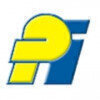

Calculate your in-hand salary
Confused about how your in-hand salary is calculated? Enter your annual salary (CTC) and get your in-hand salary


Reviews
Interviews
Salaries
Users










